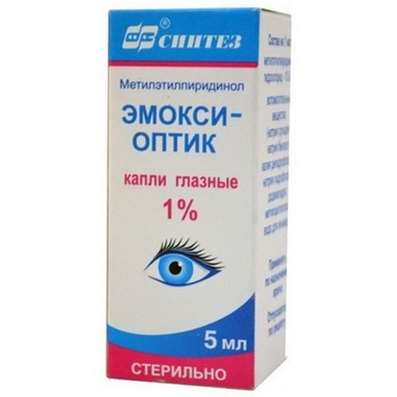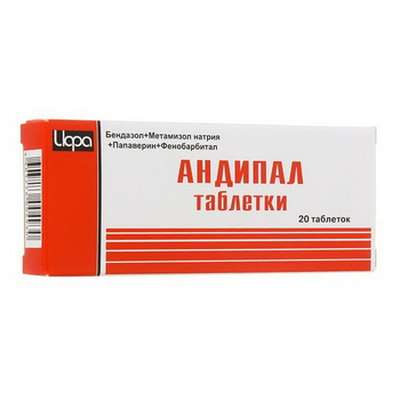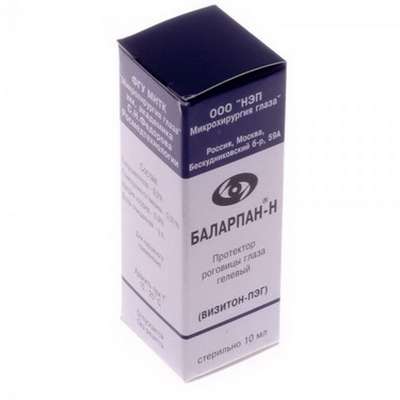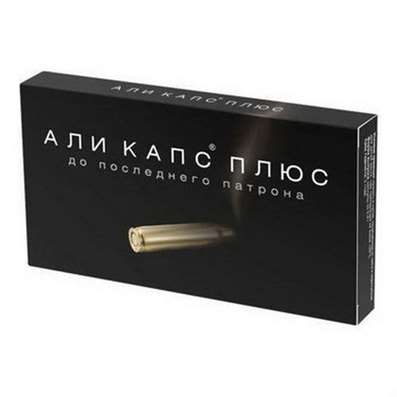Instruction for use: Estradiol (Oestradiolum)
I want this, give me price
Pharmacological group of substance Estradiol
Estrogens, gestagens; their homologues and antagonists
Antineoplastic hormonal agents and hormone antagonists
Nosological classification (ICD-10)
C50 Malignant neoplasm of breast
Cancer of the nipple and areola of the breast, Breast carcinoma, The hormone-dependent form of recurrent breast cancer in women in menopause, Hormone-dependent breast cancer, Disseminated breast carcinoma, Disseminated Breast Cancer, Malignant breast cancer, Malignant neoplasm of breast, Contralateral breast cancer, Locally advanced or metastatic breast cancer,Locally-distributed breast cancer, Locally-recurring breast cancer, Metastatic breast carcinoma, Metastasis of breast tumors, Metastatic breast carcinoma, Inoperable breast carcinoma, Incompatible breast cancer, Breast cancer in women with metastases, Breast cancer in men with metastases, Breast Cancer, Breast cancer in men, Mammary cancer, Breast cancer with distant metastases, Breast cancer in postmenopausal women, Breast cancer hormone-dependent, Breast cancer with local metastases, Breast cancer with metastases, Breast cancer with regional metastases,Breast cancer with metastases, Common hormone-dependent forms of breast cancer, Common Breast Cancer, Recurrent Breast Cancer, Recurrence of breast tumors, Breast cancer, Estrogen-dependent breast cancer, Estrogen-Dependent Breast Cancer, Disseminated breast cancer with overexpression of HER2, Tumors of the mammary glands
C61 Malignant neoplasm of prostate
Adenocarcinoma of the prostate, Hormone-dependent prostate cancer, Hormone-Resistant Prostate Cancer, Malignant tumor of prostate, Malignant neoplasm of prostate, Carcinoma of the prostate, Locally-distributed non-metastatic prostate cancer, Locally advanced prostate cancer, Locally spread prostate cancer, Metastatic prostatic carcinoma, Metastatic prostate cancer, Metastatic hormone-resistant prostate cancer, Non-metastatic prostate cancer, Incompatible prostate cancer, Prostate Cancer, Prostate cancer, Common prostate cancer, Testosterone-Depot Prostate Cancer
E28.3 Primary ovarian failure
Hypogonadism of the ovary (primary), Hypofunction of the ovaries, Estrogen deficiency, Insufficient estrogen content in the body, Insufficiency estrogenic, Insufficiency of estrogens, Primary dysfunction of the ovaries, Estrogen-deficient conditions
E28.8 Other types of ovarian dysfunction
E29.1 Testicular function
Leydig cell aplasia, Hypogonadism testicular (primary), Androgen deficiency, Eunuchism, Insufficiency androgenic, Reduced function of the sex glands, Androgen insufficiency, Insufficiency of testosterone, Hypoplasia of the testes, Hypofunction of gonads in men, Insufficiency of androgens in men,
Insufficiency of Leydig cells
L64 Androgenic alopecia
Alopecia androgenic, Androgenetic alopecia, Androgenic alopecia of moderate severity, Severe Androgen-Dependent Alopecia, Male pattern hair loss
L68.0 Hirsutism
Pathological hair body and body
L68.8 Other hypertrichosis
M81 Osteoporosis without pathological fracture
Osteoporosis
N91.0 Primary amenorrhea
N91.1 Secondary amenorrhea
Amenorrhea due to severe diets, Hypogonadotropic amenorrhea, Disgonadotropic amenorrhea, Postcontraceptive amenorrhea
N91.5 Oligomenorrhea, unspecified
Pronounced oligomenorrhea
N91.5 Oligomenorrhea, unspecified
Pronounced oligomenorrhea
N94.1 Dyspareunia
N94.6 Dysmenorrhea Unspecified
Pain during menstruation, Functional disorders of the menstrual cycle, Menstrual cramps, Emmeniopathy, Pain during menstruation, Painful menstrual irregularities, algomenorrhea, algomenoreya, Pain smooth muscle spasm, Pain spasm of smooth muscles (renal and biliary colic, intestinal spasms, dysmenorrhea), Pain spasm of smooth muscles of internal organs (kidney and biliary colic, intestinal spasms, dysmenorrhea), Disalgomenoreya, dysmenorrhea, Dysmenorrhea (essential) (Exfoliative), menstrual disorder, menstruation painful, metrorrhagia, Violation of the menstrual cycle, Menstrual irregularities, Prolaktinzavisimoe menstrual disorders, Prolaktinzavisimoe menstrual dysfunction, Pain spasm of smooth muscles of internal organs, Spasmodic dysmenorrhea, Primary disalgomenoreya
N95.1 menopausal and menopausal status of women
Atrophy of the mucosa of the lower genital tract, caused by estrogen deficiency; Vaginal dryness; Autonomic dysfunction in women; gipoestrogeniya state; Deficiency of estrogen in menopausal women; Degenerative changes of the mucous membrane in the menopause; Natural menopause; an intact uterus; climacteric; Menopause women; Menopause in women; menopausal depression; Climacteric ovarian dysfunction; Menopause; Climacteric neurosis; Menopause; Menopausal symptoms complicated psychovegetative; Climacteric syndrome; Climacteric vegetative disorders; Climacteric psychosomatic disorder; menopausal disorders; Menopausal disorders in women; menopausal condition; Climacteric vascular disorders; Menopause; Menopausal vasomotor symptoms; menopausal period; Lack of estrogen; Feeling the heat; Pathological menopause; perimenopause; menopause; postmenopausal; Premature menopause; premenopauznom period; tides; hot flashes; flushing in the Meno and postmenopausal; Hot flashes / hot flashes in menopause; Heart attack during menopause; Early menopause in women; Disorders of menopause; climacteric syndrome; Vascular complications of menopause; Physiological menopause; Estrogendefitsitnye state; premature Menopause
N97 Female infertility
Female infertility in anovulation, Hyperprolactinemic infertility, Hyperprolactinaemia with infertility, Endocrine infertility, Infertility due to hypothalamic-pituitary dysfunction, Infertility infertility, Infertility,
Infertility on the background of hyperprolactinaemia, Functional infertility, Marriage is infertile, Infertility of ovarian genesis, Stimulation of the growth of a single follicle
O48 Pregnant pregnancy
Pregnancy, Pregnancy prolonged, Prolonged pregnancy
O62.2 Other uterine inertia
metroparalysis; The weakness of labor activity; Decreased uterine tone; Induction of labor; Induction of labor at term; Induction of labor at term or near term; Activation of labor
Z30.0 General advice and advice on contraception
Safe sex, Intrauterine device contraception, Contraception, Contraceptive intrauterine, Oral contraception, Oral contraception during lactation and with estrogen contraindications, Postcoital contraception, Prevention of Pregnancy, Prevention of unwanted pregnancy, Emergency Contraception, Episodic prevention of pregnancy, Contraception in adolescents, Prevention of pregnancy (contraception)
Z58.4 Effects of radiation contamination
Radiation injuries, Acute radiation damage, Radiation syndrome
Code CAS50-28-2
Characteristics of substance Estradiol
Estradiol, a hormonal estrogenic drug (17β-estradiol), is identical to endogenous estradiol produced by the ovaries (formed in the body of women, from the first menstrual period to the menopause period). Synthetic estradiol is a white crystalline powder. Almost nerastvorim in the water; easily soluble in alcohol; soluble in acetone, dioxane and other organic solvents; it is hardly soluble in vegetable oils. Molecular weight 272.37.
In medical practice, in the form of estradiol hemihydrate and esters (benzoate, dipropionate).
Estradiol benzoate - is stable in air; soluble in alcohol, acetone, dioxane, slightly soluble in ether, vegetable oils; molecular weight 376.49.
Estradiol dipropionate is a white crystalline powder, practically insoluble in water, hardly soluble in alcohol and vegetable oils. Molecular weight 384.51.
Estradiol is used in various dosage forms: transdermal gel, solution for intravenous administration oily, nasal spray, coated tablets, transdermal therapeutic system (TDTC).
Pharmacology
The pharmacological action is estrogenic.
It penetrates into the target cell by diffusion, it is transported to the nucleus of the cell, where it binds to specific estrogen receptors and forms a receptor-ligand complex. The estrogen receptors are identified in various tissues, most of them are contained in the female genitalia, especially in the uterus, in the vagina and ovaries, as well as in the mammary glands, pituitary gland, hypothalamus, liver, bones. The ligand-receptor complex interacts with the estrogen-effector elements of the genome and specific intracellular proteins, initiates the synthesis of i-RNA (ribonucleic acid), protein and the release of cytokines and growth factors.
It has a feminizing effect on the body, stimulates the development of the vagina, uterus, fallopian tubes, stroma and ducts of the mammary glands, pigmentation in the nipple and genital area, the formation of secondary sexual characteristics by female type (redistribution of adipose tissue, etc.), growth and closure of epiphyses of long tubular bones. Promotes timely rejection of the endometrium and regular bleeding, in high concentrations causes endometrial hyperplasia, suppresses bone resorption, induces the synthesis of a number of transport proteins (transcortin, thyroxine-binding globulin, protein binding sex hormones, transferrin), fibrinogen. Increases concentrations in the blood of thyroxin, iron, copper, etc .; has a procoagulant effect, increases the synthesis in the liver of vitamin K-dependent coagulation factors (II, VII, IX, X), reduces the amount of antithrombin III. Has antiatherosclerotic activity, increases HDL (high-density lipoprotein), reduces - LDL and cholesterol (the level of triglycerides increases); modulates receptors for progesterone and sympathetic regulation of smooth muscle tone, causes intravascular fluid to enter the tissues and compensatory retention of sodium and water; in large doses prevents the degradation of endogenous catecholamines (competes for the active receptors of catechol-O-methyltransferase). It has the ability to accelerate the recovery of the number of leukocytes (neutrophils) in myelodepression, associated with radiation damage.
After oral administration, it is quickly and completely absorbed (bioavailability is about 100%). At the "first passage" through the liver is metabolized to less active products - estrone and estriol. It almost completely binds to proteins in the blood. Metabolites are secreted by bile into the lumen of the small intestine and reabsorbed (enterohepatic circulation). The final loss of activity occurs as a result of oxidation in the liver. Biodegradation products are mainly derived from kidneys in the form of sulfates and glucuronides; in the urine there are also small amounts of estradiol, estrone and estriol.
After the application of TDTC, estradiol is released from the patch and transdermally enters the bloodstream at a constant rate, maintaining a predetermined level of the hormone in the blood. When applied in the form of a gel and patch, estradiol is not subjected to the effect of "first passage" through the liver, so that fluctuations in the level of estrogen in the plasma are much less pronounced than when taking estrogens inwards. With the weekly application of TDTC, it is possible to achieve serum estradiol level similar to that created in the early follicular phase in the reproductive life, with a serum estradiol / estrone ratio of about 1. The absolute value of the serum estradiol level is directly proportional to the surface area of the patch. The average equilibrium concentration of estradiol in the serum is about 40 pg / ml (12.5 cm2 patch) and about 80 pg / ml (25 cm2 patch). Twenty-four hours after the removal of TDCT, the concentrations of estradiol and estrone in the serum are reduced to the original value. When the patch is applied, the concentrations of estradiol conjugates in the urine increase 5-10 times and return to the initial level within 2 days after removal of the system.
When applied in the form of a gel, estradiol penetrates the skin, while most of it enters the systemic bloodstream at once, and a certain amount is retained in the subcutaneous fat and is released into the bloodstream gradually. Tmax - 3-4 hours, bioavailability - 82%.
When applying the patch-TTCT and gel, metabolism and excretion correspond to the metabolism and elimination of natural estrogens. Do not cumulate.
Application of Estradiol
Estrogenic insufficiency in menopause and in surgical menopause, incl. after ovariectomy, radial castration; primary and secondary amenorrhea, hypomenorrhoea, oligomenorrhoea, dysmenorrhea, secondary estrogen insufficiency, alopecia with hyperandrogenia; hirsutism in the syndrome of polycystic ovaries, vaginitis (in girls and in old age), hypogenitalism, infertility, weakness of labor, delayed pregnancy, for suppressing lactation, viril hypertrichosis in women; prevention of postmenopausal osteoporosis in women, breast cancer in men and women with metastases (palliative therapy), prostate carcinoma (palliative therapy), urogenital disorders (dyspareunia, atrophic vulvovaginitis, urethritis, trigonitis); as a means of stimulating hemopoiesis in men with acute radiation damage.
Contraindications
Hypersensitivity, estrogen-dependent neoplastic processes or suspicion of them, liver tumors (including in anamnesis), sickle cell anemia, herpes, otosclerosis (including exacerbation during pregnancy), retinopathy or angiopathy, cholestatic jaundice or permanent itching (including the intensification of their manifestations during the previous pregnancy or on the background of taking steroid drugs), history of the gall bladder (especially cholelithiasis), unusual or undiagnosed genital or uterine bleeding (used estrogen can interfere with the diagnosis), thrombophlebitis or thromboembolic conditions in the active phase (except for treatment of breast or prostate cancer); thrombophlebitis, thrombosis or thromboembolic conditions associated with taking estrogens (in the anamnesis); inflammatory diseases of female genital organs (salpingoophoritis, endometritis); hypercalcemia associated with bone metastases of breast cancer.
Only for the treatment of breast and prostate cancer (in addition): coronary or cerebrovascular diseases, active thrombophlebitis or thromboembolic diseases (high doses of estrogen used for treatment, increase the risk of myocardial infarction, pulmonary embolism, thrombophlebitis).
Restrictions for use
Bronchial asthma, diabetes mellitus, migraine, epilepsy, arterial hypertension, heart failure, coronary artery disease (ischemic heart disease); kidney failure; acute or chronic liver disease (including history) with changes in functional liver test, hyperlipoproteinemia, edematous syndrome, endometriosis, fibrocystic mastopathy, porphyria, pituitary tumors, connective tissue diffuse disease, Dubin-Johnson syndrome or Rotor syndrome.
Application in pregnancy and lactation
Contraindicated in pregnancy, incl. (estrogen may have an embryotoxic effect). Studies have shown the relationship of congenital malformations with the use of certain estrogens during pregnancy.
The action category for the fetus by FDA is X.
For the duration of treatment, breastfeeding should be stopped (estrogens enter breast milk).
Side effects of Estradiol
From the nervous system and sensory organs: dizziness, headache, migraine, depression, chorea, visual impairment (changes in the curvature of the cornea), discomfort when wearing contact lenses.
From the cardiovascular system and blood (hematopoiesis, hemostasis): increased blood pressure (arterial pressure), thromboembolism.
On the part of the intestine (gastrointestinal tract): nausea, vomiting (mainly central genesis when using high doses), epigastric pain, flatulence, diarrhea, anorexia, cholestatic jaundice, cholelithiasis, hepatitis, pancreatitis, intestinal and biliary colic.
On the part of the genitourinary system: in women - hemorrhages of the "breakthrough", uterine bleeding of unclear etiology, change in the character of uterine bleeding and spotting discharge, metrorrhagia (a sign of overdose of estradiol), premenstrual syndrome, amenorrhea, dysmenorrhea, fibromyoma enlargement or uterine leiomyoma, cervical secretion change , changes in the nature of vaginal discharge, vaginal candidiasis, endometrial hyperplasia (when administered without progestogen), endometrial carcinoma (in menopause in women with an intact uterus ), symptoms of cystitis (without bacterial infection); with prolonged use - sclerosis of the ovaries; soreness, sensitivity and increase in breast size, increased libido; in men - tenderness and sensitivity of the mammary glands, gynecomastia, decreased libido.
On the part of the skin: chloasma or melanoderma, contact dermatitis, hemorrhagic rash, erythema nodosum, erythema multiforme, alopecia, hirsutism, itching and hyperemia of the skin (on the spot of patch application-TDTS).
Other: change in body weight, decreased tolerance to carbohydrates, worsening of porphyria, spasms of calf muscles; at long application - infringement of an exchange of sodium, calcium and water with formation of peripheric edemas.
Interaction
Estradiol reduces the activity of diuretics, anticoagulants, hypotensive and hypoglycemic agents. Reduces glucose tolerance (may need to adjust the dosage regimen of hypoglycemic drugs (drug)). Estradiol increases the effectiveness of lipid-lowering drugs.
Inducers of microsomal liver enzymes, for example some anticonvulsant and antimicrobial agents (including hydantoins, barbiturates, primidon, carbamazepine, rifampicin), can accelerate the metabolism of estradiol, increase the clearance of sex hormones and reduce clinical efficacy.
Folic acid and thyroid drugs strengthen the action of estradiol. Significant consumption of alcohol during treatment can lead to increased levels of circulating estradiol.
Overdose
Symptoms: nausea, vomiting, in some cases - metrorrhagia.
Treatment: maintenance of vital functions (against drug withdrawal), symptomatic therapy.
Routes of administration
Inside, topically, intranasally, intramuscularly (intramuscularly).
Precautions for Estradiol
Before the start of the application, a complete general medical and gynecological examination, including examination of the abdominal and pelvic organs, mammary glands, measurement of blood pressure, cytological analysis of the endometrium, is necessary. It is necessary to exclude pregnancy. With prolonged therapy, a similar examination should be performed every 6-12 months.
For 4-6 weeks before the planned surgical intervention and during a period of prolonged immobilization, it is recommended to interrupt treatment in order to avoid thrombosis.
The drug should be discontinued immediately in the following cases: deep vein thrombosis, thromboembolic disease, a significant increase in blood pressure, the appearance of jaundice, the appearance of migraine-like headache, sudden visual impairment.
During hormone replacement therapy, patients with hypertension should regularly monitor blood pressure.
In the initial period of treatment, patients with diabetes require careful monitoring because of a possible decrease in glucose tolerance.
The change in the level of estrogen in the blood can affect the performance of some endocrine and liver functions.
Estrogens can cause fluid retention in the body, so patients with impaired cardiac or renal function require careful monitoring.
It is necessary to inform the attending physician about the simultaneous administration of barbiturates, phenylbutazone, hydantoins, rifampicin, the appearance of irregular bleeding or unusually heavy bleeding between the use of the drug, discomfort in the epigastric region.
In the event of irregular uterine bleeding during the administration of the drug, a cytological analysis of the endometrium should be performed.
During treatment, it should be borne in mind that prolonged use of only estrogens in the climacteric period can lead to endometrial hyperplasia and increases the risk of developing endometrial cancer. To reduce the risk of developing endometrial cancer, an additional progestogen should be taken (usually for 10-12 days per month), which leads to a transition of the mucous membrane of the uterus to the secretory phase, with its rejection and subsequent menstrual bleeding after discontinuing progestogen administration. When irregular menstrual flow (in women with an intact uterus) appears against the background of estradiol treatment, diagnostic scraping should be performed to exclude the malignant neoplasm of the uterus.
In postmenopausal women who have been on hormonal replacement therapy for a long time, the risk of breast cancer increases. If the duration of treatment is more than 5 years, it is necessary to carefully weigh the positive effects of treatment with adverse effects.
In patients who are on long-term treatment, regular examination of the mammary glands is necessary, incl. should teach them regular self-examination. Special caution should be exercised when administering estrogens to women who have or have had nodular or fibrocystic breast changes in the past. In such cases careful monitoring and regular mammography should be performed.
In women taking the estrogen preparations in the menopausal period, there is an increased risk of gallstone disease (estrogens increase the lithogenicity of bile).
The drug is not a contraceptive and does not restore the ability to fertilize.
Do not put the band-aid on the area of the mammary glands or waist. If the patch is applied correctly, then you can take a bath or shower, but you need to take into account that in hot water the patch can get unstuck.
You should avoid getting the gel on the mammary glands and mucous membranes of the vulva and vagina.

 Cart
Cart





